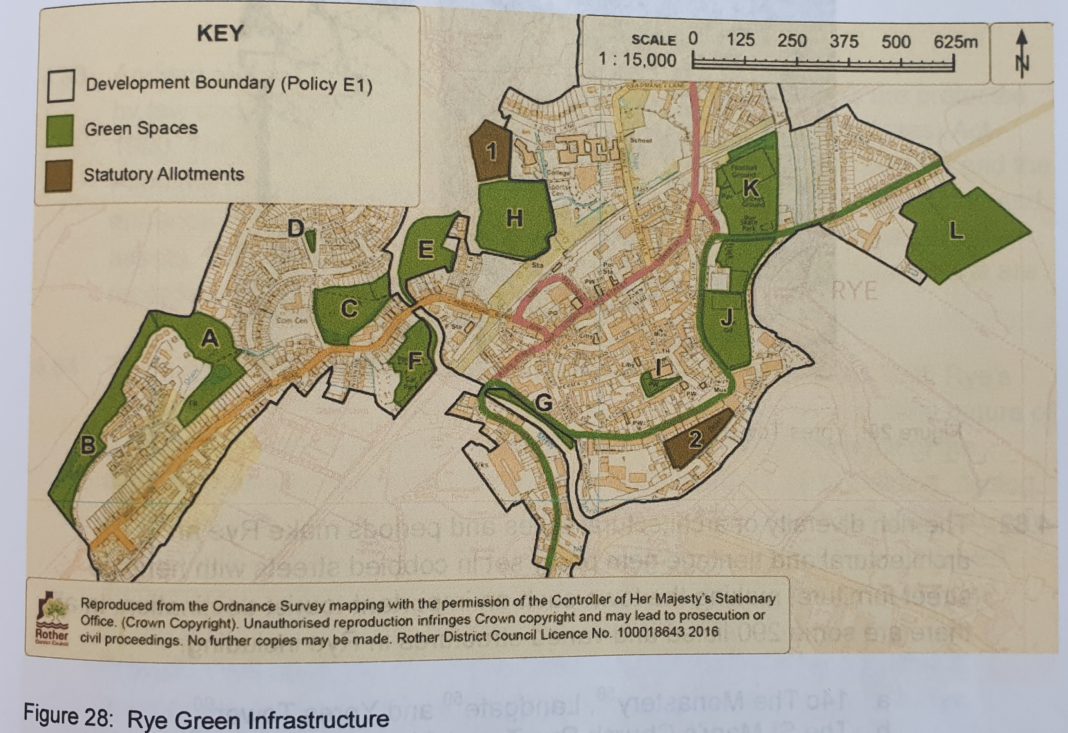Now that the Rye Neighbourhood Plan has been agreed and is in force as a statutory planning instrument we have been reviewing some of the actions which fall from the work.
One area on which questions are still being posed is the allotments. In particular, we are asked about their vulnerability to future development. This piece explains the position.
For those wanting more on the history there are excellent earlier pieces written by individuals in Rye’s Own, such as by Arthur Woodgate in 2005 and Royston Godwin in 2013. Despite the debate in the past, the position is now clear. The two remaining Rye allotments – Love Lane and South Undercliff – are recorded in the Rye Neighbourhood Plan (Pages 72 and 73) and endorsed by Rother District Council as “statutory allotments”.

As such their status have roots in the 19th century, when land was given over to those without gardens to allow the growing of food. In 1908 the Small Holdings and Allotments Act came into force, placing a duty on local authorities to provide sufficient allotments, according to demand. At the end of the First World War more land was made available, primarily as a way of assisting returning service men (Land Settlement Facilities Act 1919) to secure allotments.
The rights of allotment holders in England and Wales were strengthened through the Allotments Acts of 1922, but the most important change can be found in the Allotments Act of 1925 which established “statutory allotments” which local authorities could not sell off or convert without the agreement of the Secretary of State and only then if strict criteria were met.
In 2011, the Localism Act set out the arrangements for Neighbourhood Planning, enabling communities to shape development in their “neighbourhoods” (in our case, Rye Parish) including the confirmation of any allocation of allotments.
Although it is never possible to say never in planning situations we take some satisfaction from a recent case in Watford. There, allotment-holders at a 118-year-old site won a landmark legal victory to save their plots from redevelopment, after the High Court and later a judicial review overturned ministerial support for a local Council to dispose of local facilities.
Editor’s note:Rye News has been told by the CIC that manages both allotments, that both are fully subscribed with a long waiting list so it is good to see that their future is, as far as possible, assured.
Image Credits: Rye Neighbourhood Plan , Rye News library .




The author did not pick the title. His view is that now that they have statutory status they are saved!
Saved or protected? The allotments were perhaps under no clear and present danger but could always be under threat! Col Kimber’s finessing the RNP means the allotments now have the highest level of protection available since Rother have, after years arguing and employing expensive lawyers to argue the contrary, officially designated them as what they always were – statutory allotments! The Colonel may say we can stand easy after his relatively short but highly effective campaign on this issue but there are likely to be many other times when he needs to call us to attention!
Many thanks to Anthony and the NP team for getting the status of the allotments settled after many years of uncertainty.